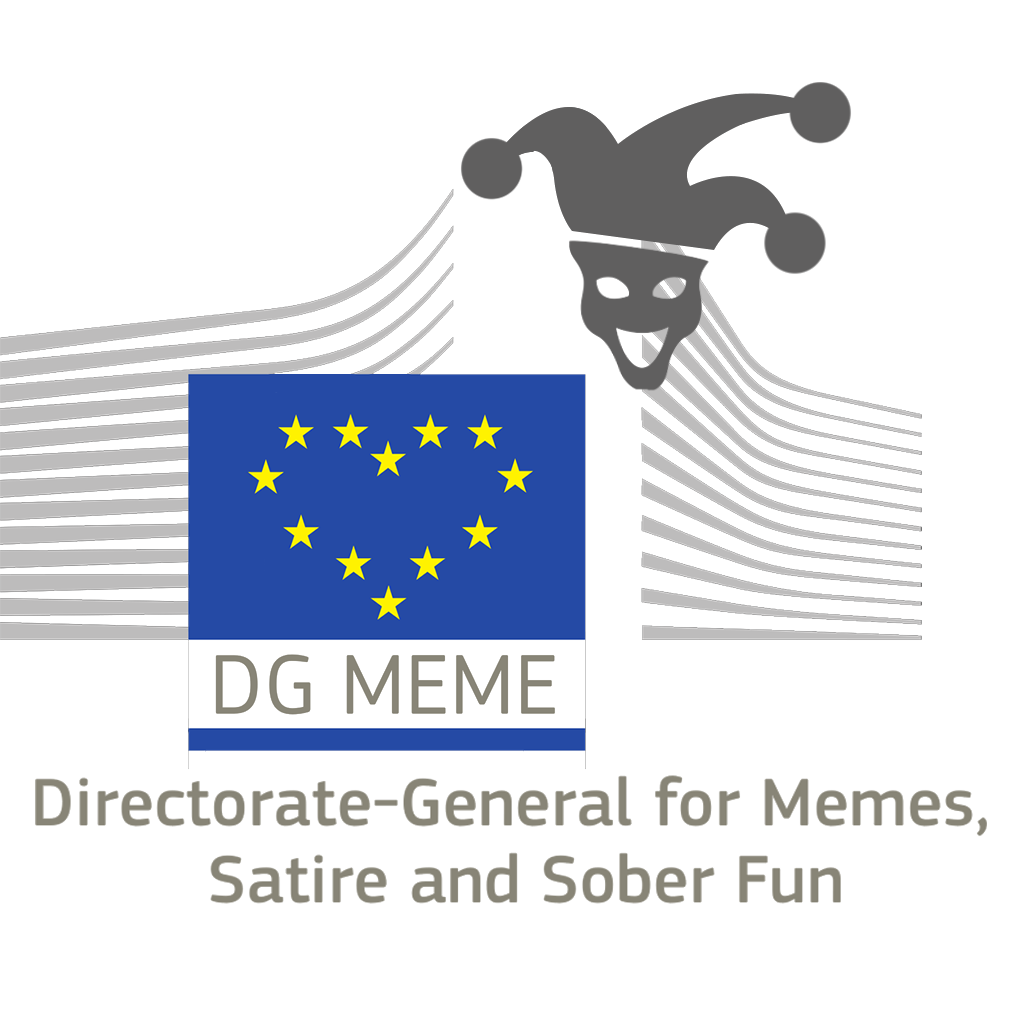At DG MEME we keep hearing that the EU does not invest in research and that we lose our best minds to other continents. So I decided to go out and check if this is really the case; and what we could do to improve the situation. I will collect these articles in EUREKA (European Union’s Research, Enterprise, and Knowledge Aces), a new section of the website. For this first article, I was looking for a start-up that is:
- EU-based, with an international team
- contributing to the green transition
- run by scientists who studied abroad but came back to Europe
And that’s how I met Suzanne and Mattia, the two co-founders of NitroVolt, a Danish start-up that is revolutionizing the ammonia production.

Ammonia? I thought DG MEME talked only about EU stuff…
Yeah, but to get to the EU stuff, there are two slightly technical paragraphs to read, so bear with me, I even give you on handy graph to make things clearer.
The technical bit
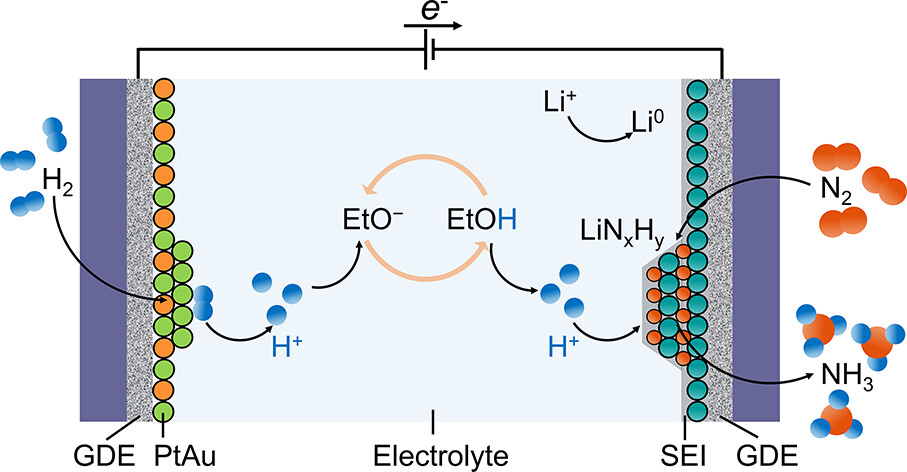
Currently, the main industrial procedure for the production of ammonia is the 100 years old Haber–Bosch process, which requires huge, centralized facilities with high temperature (400-500 °C) and high pressures (150-300 atmospheres). This process releases about 1.5% of the global green house gas emissions, and on top of that one must also factor in the costs and the CO₂ emitted to bring the ammonia to points-of-use; which is usually rural farms, as ammonia is primarily used as fertilizer.
NitroVolt developed the Nitrolyzer, a small scale reactor that works at room temperature and only requires air, water, and electricity to synthesize sustainable ammonia. This scalable, modular unit can stand at the customer site, such as a farm or greenhouse, generating the necessary ammonia on demand.
How did NitroVolt start?
Suzanne has Danish and Persian heritage, but spent her adolescence in California. I am glad to find out she moved back to Europe for her studies. “When I had to choose my university, the cost at Caltech was 26,000$ per semester. At DTU (the Technical University of Denmark, ed), they pay you to go to university, so it was a no-brainer”. Besides the economic aspect, the DTU’s physics department is also highly ranked. “In fact, when I worked at Stanford for a part of my Phd, I was surprised the facilities and equipment we had access to at DTU were way better”:
Caltech costs 26,000$ per semester. At the Technical University of Denmark they pay you to study, so it was a no-brainer.
Mattia was born in Tuscany and raised in Trentino, Italy. He studied at Politecnico of Milan, at the Technical University of Munich, and at the Hong Kong University of Science and Technology to finally land in Denmark, where the two met.
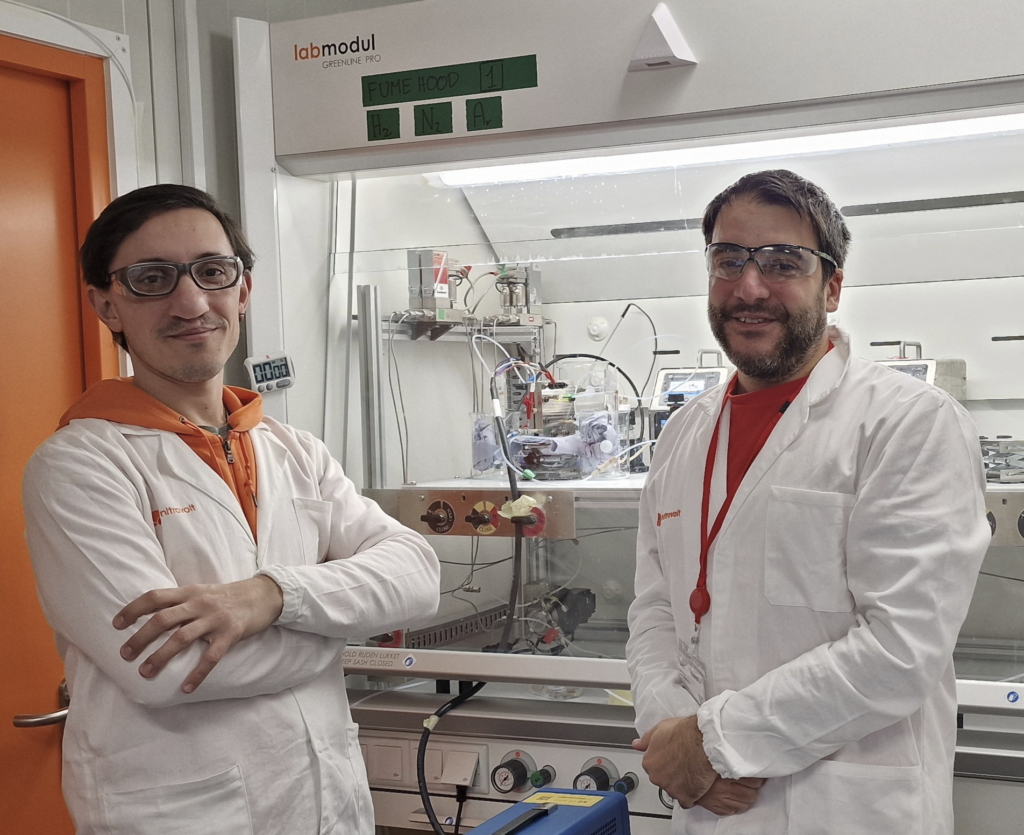
In 2017, Suzanne started her PhD at DTU. “The team I worked for had been trying to produce carbon-free ammonia for fifteen years. The agreement was that if there had been no improvements within two years, they would assign me to another project”.
She spent the first year of her PhD trying to test other people’s work: “There were lots of papers claiming they were able to produce ammonia at room temperature and we had to know which ones were working”. So she developed a protocol to investigate these claims and, to her surprise, the tests always returned negative.
It took a whole year for her findings to be published. “None of the five reviewers wanted to publish the protocol, because we were basically proving that their methods for producing ammonia did not work”. Fortunately, a brave editor forced the article through, because he recognized the importance of following a rigorous protocol. Suzanne’s first publication was a big success, and it appeared in Nature, one of the most prestigious scientific journals in the world.

1. That’s the Nitrolyzer, where the magic happens
2. We add some air and water to the system
3. We zap electricity through the chamber
4. And bam, decarbonized ammonia!
None of the reviewers wanted to publish our protocol, because we were basically proving that their methods for producing ammonia did not work
“This actually shows that the scientific method works, even in the faulty publication system we have”, says Mattia. It turned out, the previous experiments simply measured ammonia, which is present almost anywhere in small concentrations, but it was not produced from the nitrogen input. “Reviewers can only proof-read a scientific text to see if it makes sense, but it would be too expensive to replicate every experiment”.
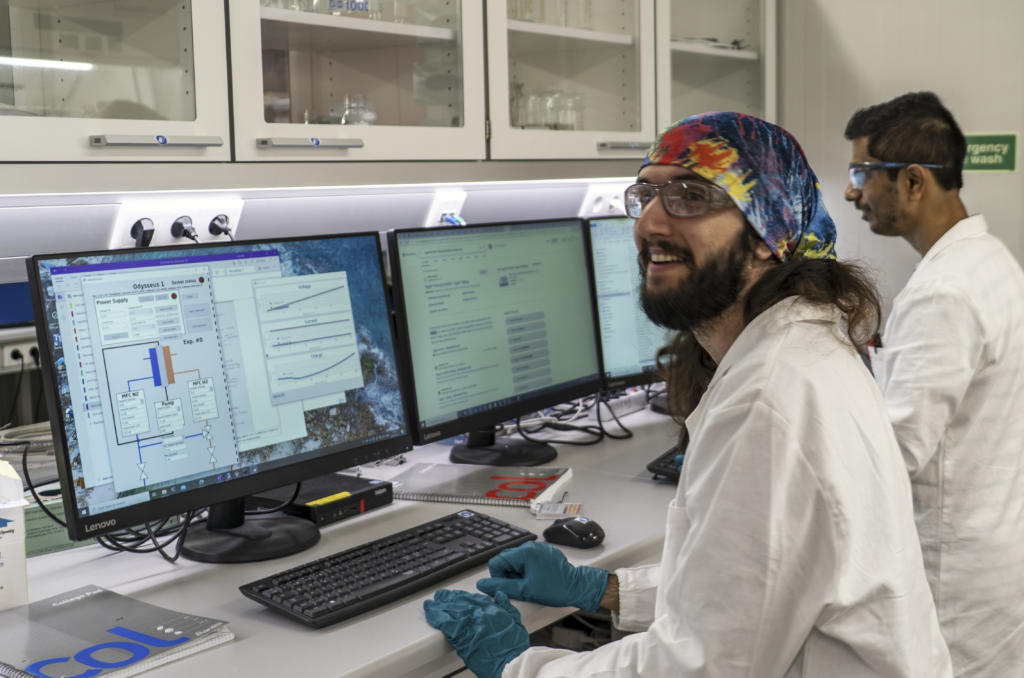
While further testing the literature, Suzanne and her team found an overlooked article from 1993 that used an organic-based ammonia production process and she used her protocol on it. “Eureka! It actually worked, it was the first time we measured electrochemically produced ammonia”. This allowed other research labs around the world, such as Monash in Australia, MIT in the US, and Imperial College of London, to use that method successfully.
Reviewers can only proof-read a scientific text to see if it makes sense, but it would be too expensive to replicate every experiment.
Following the publication’s success, Suzanne’s professor received a big grant and their team hired twelve more people. Mattia was one of them. “He was the only added team member I did not have a hand in hiring, as I was on an exchange period in the US”. The two finally met when Suzanne came back in January 2019 and in a few years they manage to break free from academia and create their own start-up.
Why does the EU lag behind?
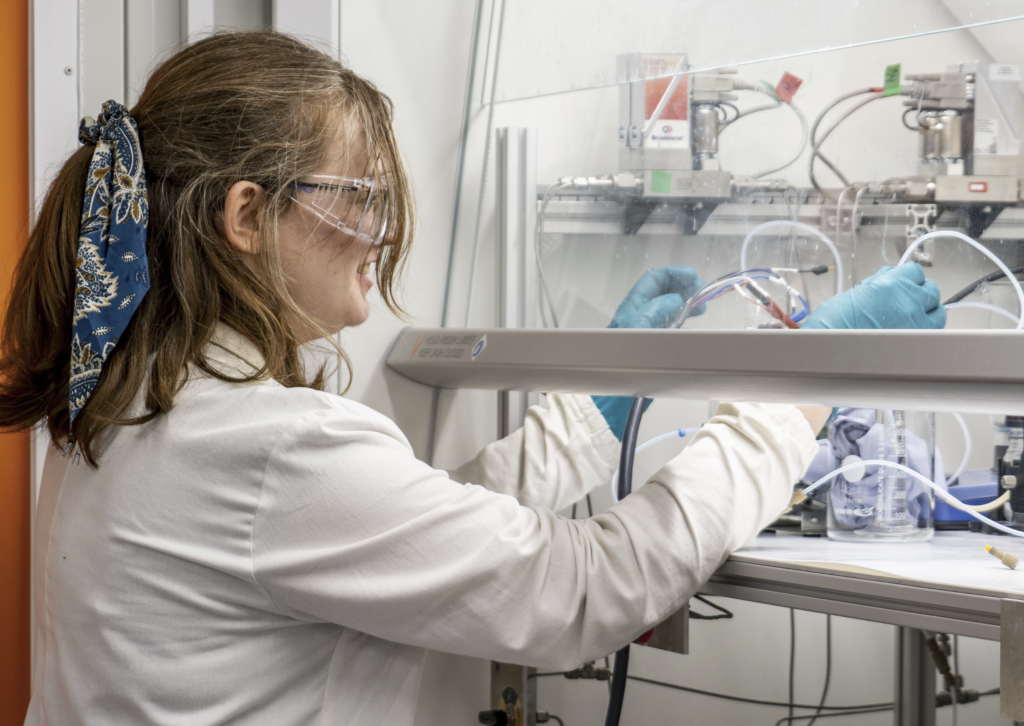
According to the NitroVolt’s founder, there are two aspects to consider when comparing EU and US research approaches, one is cultural, the other one is economical: “We don’t dream as big and we are not as bold as the Americans. This is particularly true in Scandinavia: we are told from a young age not to be the loud ones, and to stand out is considered almost a negative thing. In the US, on the other hand, everybody wants to be the researcher the whole world has been waiting for”.
We don’t dream as big and we are not as bold as the Americans.
Public relations and advertisement are also vital in the academic world: “When American universities do a little discovery they sell it incredibly well, in the EU we don’t. Our team published a few papers in the highly prestigious journals of Science and Nature, but this didn’t even appear on the university’s website and nobody heard about it in Denmark”.
About the economic aspect, it is well known that in the US there is more risk-willing capital available and that one can get a lot of money with just a good idea. “When we were fundraising for NitroVolt, we were asking for three million €. In the US, the investors asked as: ‘If we give you five million, what can you achieve with that?’. And this excited us. When we talked to the German investors, they told us: ‘If we only give you one million can you still get the same results?’. This made us sad”.
In the US, when we needed three million dollars for our startup, they asked us: “What can you do with five million?”. In Germany, they asked us: “Can you achieve the same results with one million?”

Fortunately, when talking about quality, Suzanne has no doubts: “The work we did at DTU is much rigorous and thorough than the work I saw at Stanford and this came as a shock to me”. Americans publish a lot of papers, though maybe not always of the best quality. Yet, a comparison between Stanford and DTU is risky, says Mattia: “One is private, the other is public; they have a very different history and different purposes… It’s a bit like comparing a McDonald’s with a traditional European bakery: they both feed you, but they have different business models and do not serve the same purpose in society”.
What does the EU need to improve?
According to the two entrepreneurs, having a uniformed European start-ups platform would help a lot. “Capital could flow easily among countries and we could share our knowledge and standards with other EU researchers”.
Not to mention the need for common rules: “At a meeting with Commissioner Vestager, we discussed our needs and struggles together with a few start-ups from other EU Countries. It felt like we were working in different worlds: the rules are different, the taxation is different, the interaction with universities is different”.
When we interact with start-ups from other EU countries it feels like we are working in different worlds: the rules are different, the taxation is different, the interaction with universities is different
Another sore topic is regulations: “In our field, which is quite old and possibly contains regulations that were written before the European Union, it is very complicate to understand the details of the Danish rules. And if we had to build it in Germany, we would have to start from zero, because they have different regulations”.
Then there is the problem of getting the funds. To write a proposal for a EU grant one needs to hire consultants, as it is a full-time job for a few months. “A very specific wording must be used, and one has to mention all the EU directives and EU stuff that a scientist might not necessarily know”. Obviously, besides the hiring fee, the consultant gets a percentage, usually from 5% to 10%, of the grant, if they win it. “These consultants thrive off our work but we really wonder what is their added value to the research. If the EU had more accessible applications, we could use the money we save from consultants’ fees to get the research and development done”.
If the EU had more accessible applications, we could use the money we save from consultants’ fees to get the research and development done
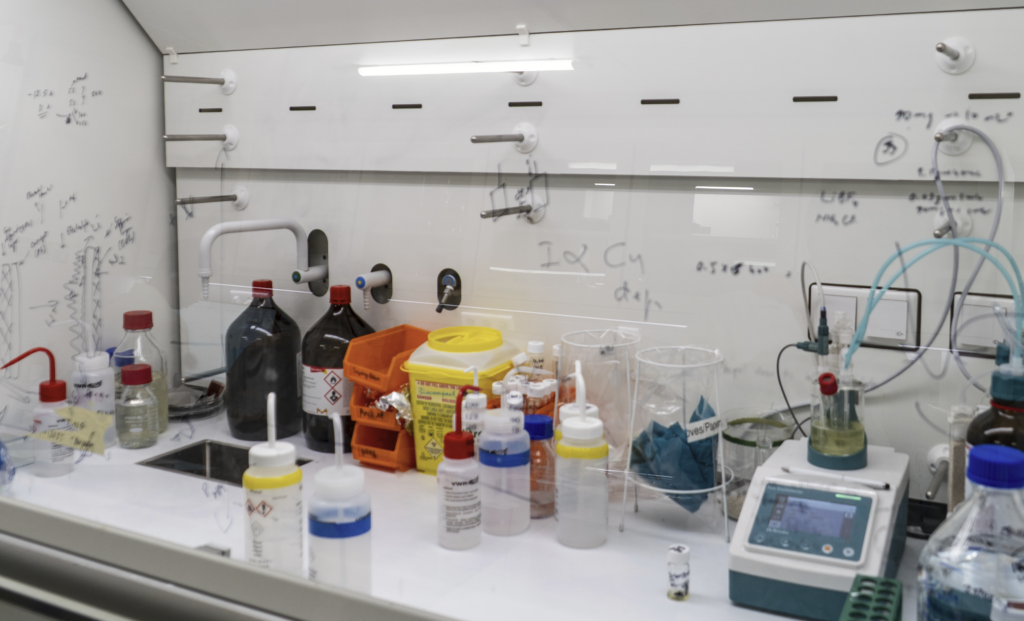
In Denmark, it is fortunately possible to apply for a grant to pay for a part of the consultant fee. “And we are thankful for that. But this damages poorer EU countries, because they can’t afford to pay for consultants”.
The two explained to Vestager how hard it was to just get the initial few 100Ks to spin out of the university and take the idea to the next level. “In the end we had to look outside of Europe, to an American foundation. It was much easier there: five rounds of interviews and we wasted way less time in writing the application. Of course, that was private money, but they have a similar process for federal grants too”.
Two brilliant researchers shouldn’t have to become experts of the EU intricacies just to get a small grant. “In the end, we got grants from America, from Denmark but none yet from the EU, even though we have applied to three of them”.
Two brilliant researchers shouldn’t have to become experts of the EU intricacies just to get a small grant
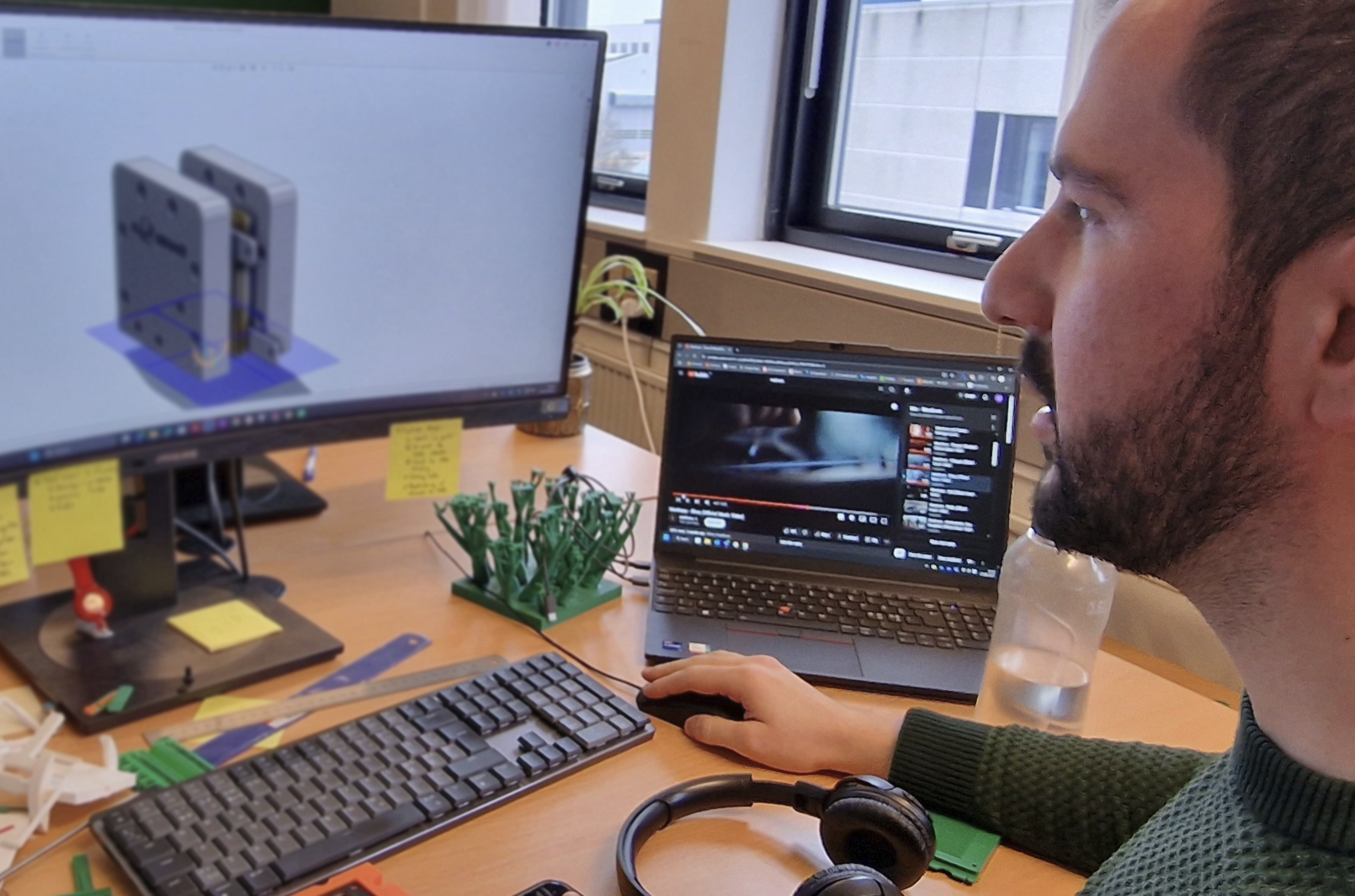
Fortunately, there are also positive aspects in our border-free Europe: “It is really easy to hire people from other EU countries, while when we want to get employes from extra-EU countries it gets trickier”.
NitroVolt has employes from ten different countries. Leading a multicultural and intercultural team is for sure challenging. “I remember the struggle to critique the work of a French colleague. I grew up in the States, so our way to give feedback is that you first say something nice, then you say the problem, and then you end with something nice. We call it ‘the shit sandwich’. But she didn’t understand that I was critizing her, because in France you need to be very direct. With British coworkers, on the other hand, you must be extremely polite and read between the lines. There are differences even among Swedish and Danish coworkers, they are just more subtle”.
In the EU it is really easy to hire people from other EU countries
Fortunately, literature came to the rescue: “We found great help in a book called The Culture Map by Erin Meyer. It really shows how different each culture is, especially from a management perspective. We have it as a required read for our employees too, so that they are aware of this extra layer of complexity, which is as important as the technical one”.
Maybe they should read this at the European Parliament too.
Which cool people did NitroVolt meet?
Obviously, I will ask about Margrethe Vestager first, in which circumstance did you meet her?
It was at a meeting of the Eurotech Alliance, a gathering of European universities, hosted that year by DTU. Vestager wanted to better understand what are the barriers that start-ups face in the EU.
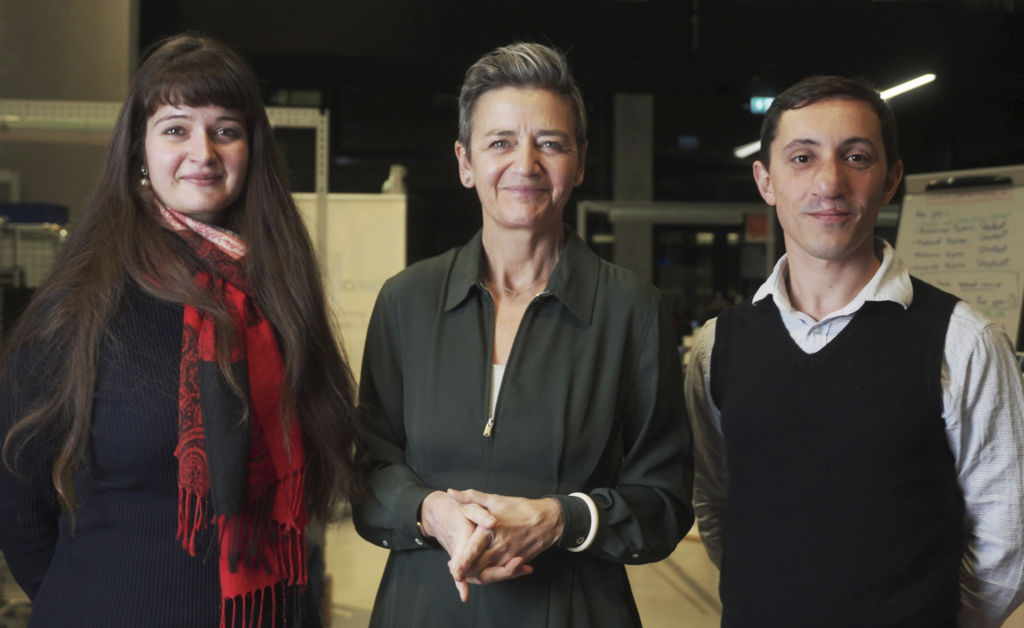
She was really interested and had really sharp questions. When her assistant called her because it was time for some PR stuff she replied: ‘I want to stay here and talk a bit more because I am learning a lot’. She was very approachable.
We miss her immensely. Suzanne, I know you also met Bill Gates, how did it go?
We had gotten a grant from Breakthrough Energy Fellowship, to help us commercialize our idea and create the start-up. And this comes with weekly meetings about extremely useful stuff, like how to prepare go-to-market strategies, how to dress at conferences or how to fight burnout. This has been by far the most useful accelerator program we’ve been through. And the founder is Mr. Gates.
He was visiting Denmark for signing some other deals and he was curios to learn more about Power-to-X (PtX) technology, which uses renewable electricity to produce green fuels and other products like hydrogen, ammonia, and e-kerosene, thus reducing carbon emissions. The foundation had therefore organized a dinner with all of the top players in the field.
Where did the dinner take place?
It was in Marchal, a Michelin-starred Restaurant in Hotel d’Angleterre. Meeting Bill Gates was like meeting one of my idols, so I was too stressed to feel the taste of the food; I have no recollection of what it was served, though I am sure it was delicious. At every course they were serving wine, but I didn’t drink it, because I wanted to stay sharp. Then, after my speech, I drunk three glasses in one go.
Meeting Bill Gates was like meeting one of my idols, so I was too stressed to feel the taste of the food they served.

Who were the chosen few?
We were about fifteen people: there was the CEO of SAS, the CEO of Ørsted, the CEO of Topsoe, big name companies, huge budget… And then there was me! because we do power to ammonia. And I was the youngest CEO in that room by at least twenty years.
What did you feel when you first met him?
When he walked in the room, I thought he was not very imposing as a person. But as soon as he talked, he filled the entire room. And eveyrthing he said was so to the point. Of course he has an amazing team that briefs him but he has an incredible understanding of every aspects of technology.
What did you talk about?
Each of us made a short speech about our work and our struggles. Gates had incredibly sharp questions and he was really interested. It looked like he understood the technical problems of each company.

Mattia: “I remember that during the dinner she wrote us that she needed a picture of the cell for Bill Gates”.
Suzanne: “Before the dinner I explained to Gates that we were preparing to upscale and he asked some questions about our cell. So after the dinner I went to him and showed him the schematics and that’s why I am just next to him in the group photo that was taken afterwards”.
Is it true you also met the King of Denmark?
Yes, he visited our stand at a conference. He is really a down-to-earth guy, it’s really easy to talk to him.
You mean, a King is more approachable than Bill Gates?
Possibly. Or maybe I was just very nervous with Gates.
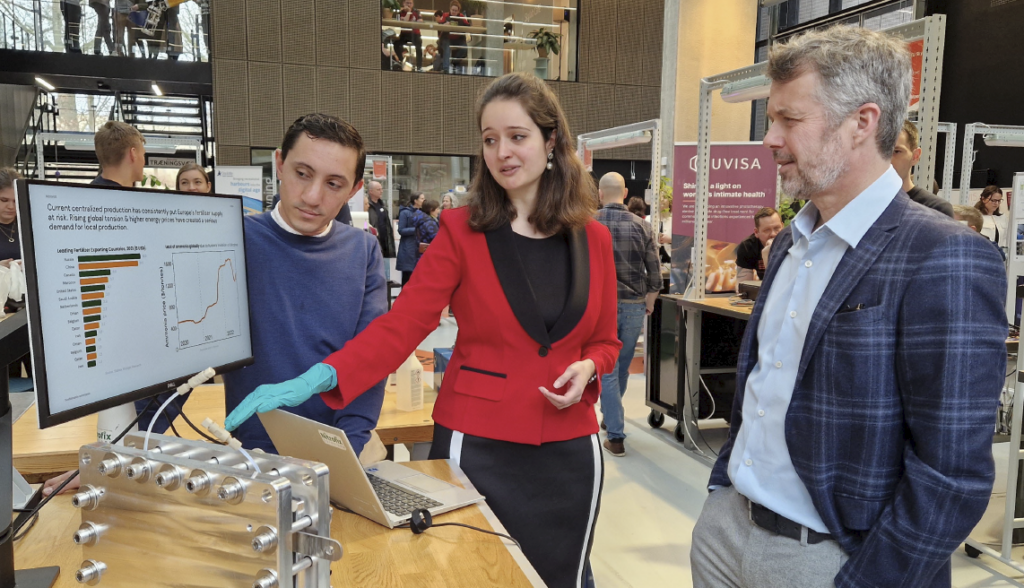
NitroVolt has one more incredible story about interacting with one of the most powerful investors in the world, but it is unfortuantely protected by a non-disclosure agreement. So live with that!
Bonus story: what about the mysterious Japanese professor from the 1993 article?
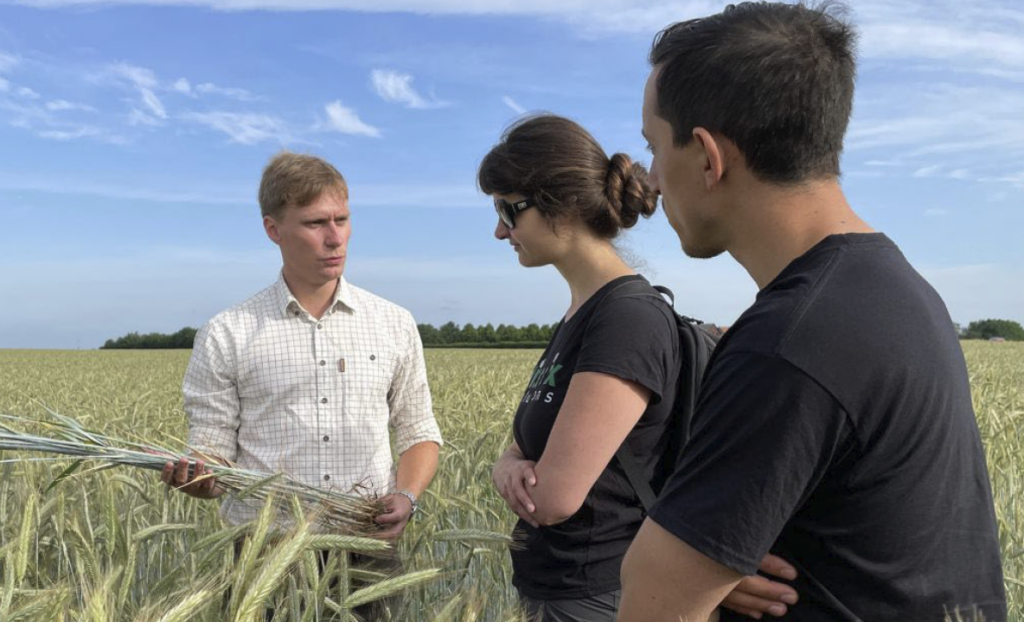
For years, Mattia tried to get in touch with him. He only had the name from the paper, A. Tsuneto, but he could not find a lead. In 2024, after Nitrovolt named one of their meeting rooms after him, he was looking for his portrait and among the countless manga characters called Tsuneto, he finally stumbled upon Dr. Akira Tsuneto, an organic chemistry professor currently serving as Vice-President of the National Institute of Advanced Industrial Science and Technology (AIST).
“He received his PhD in 1994, which matched the timeframe of the two publications we knew by him, so I understood this was our guy”. Suzanne then contacted AIST and within a few days they were in contact with him. “He was really pleaesed to know that his PhD work had been dug out from the literature 15 years later, contributing to the birth of a new field of chemistry (Metal mediated ammonia electrosynthesis, ed)”.
